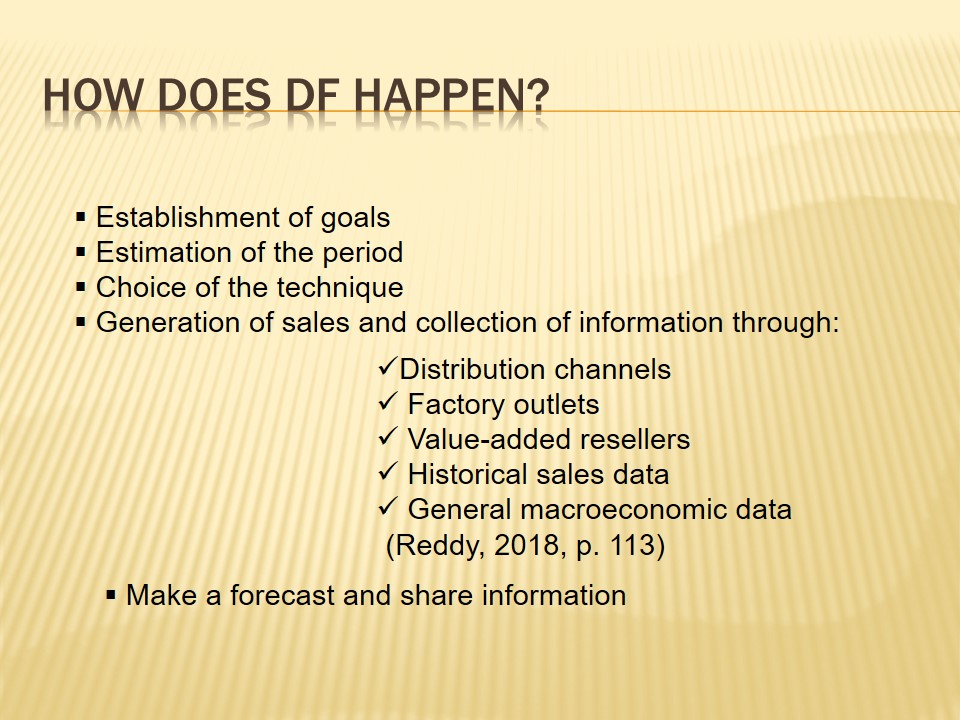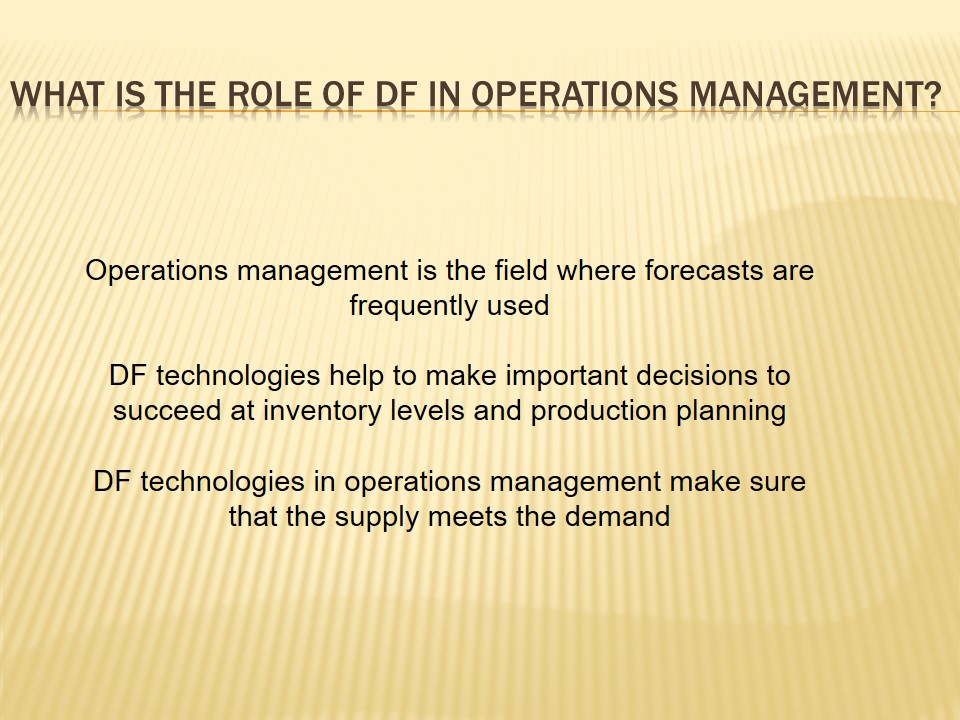What Is Demand Forecasting?
- IT sector has to deal with the economic downturn.
- Enterprises have to plan and think about the future.
- Demand forecasting (DF) is one of the strategies to minimize working expenses and maximize capital investments.
- DF is a prediction that is based on past experiences and present forces.
Nowadays, the IT sector undergoes considerable changes because of the existing organizational problems and the economic downturn. There are many ways to promote effective planning and achieve the main goal that is to learn how to think about the future. During a considerable period of time, demand forecasting (DF) remains one of the well-known strategies in operations management. According to Reddy (2018), modern DF technologies help to minimize working expenses and achieve maximum value from capital investments. In addition, DF is compared to the ability to predict using already gained past experience and properly defined present forces.

How Does DF Happen?
- Establishment of goals;
- Estimation of the period;
- Choice of the technique;
- Generation of sales and collection of information through:
- Distribution channels;
- Factory outlets;
- Value-added resellers;
- Historical sales data;
- General macroeconomic data (Reddy, 2018, p. 113);
- Make a forecast and share information.
The process of forecasting is not complex, but all its stages have to be followed and properly understood. DF begins with an appropriate establishment of the goals that have to be achieved at the end of the operation. Then, it is required to identify the time period for which the forecast should be made. The choice of forecasting technique directly depends on the goals and the time given. The next step is the necessity to gather information. Reddy (2018) focuses on such sources as “Distribution channels, factory outlets, value-added resellers, historical sales data, and general macroeconomic data” (p. 113). These activities help to realize the quantities of finished goods that have to be produced. Finally, a forecast can be made.

What Is the Role of DF in Operations Management?
- Operations management is the field where forecasts are frequently used.
- DF technologies help to make important decisions to succeed at inventory levels and production planning.
- DF technologies in operations management make sure that the supply meets the demand.
Operations managers have to deal with numerous tasks all the time. Planning processes may vary in operations, including “capacity, production, inventory, and materials” (Petropoulos, Kourentzes, Nikolopoulos, & Siemsen, 2018, p. 34). All of them rely on demand forecast. Therefore, operations management remains the field where DF can never be neglected. DF technologies help to make decisions and understand the connection between products and services that may be offered, available facilities and equipment that are available, and scheduling or budgeting that should be introduced (Reddy, 2018). The essence of the role of DF in operations management is to make sure that the supply meets the demand.

DF in Real Life
- A company should be prepared for its forecast;
- Managers must gather past data, feedback, and achievements;
- DF technologies have to be chosen regarding the company’s readiness;
- It is normal to ask management gurus for help;
- It is possible to ignore system recommendations after a thorough investigation.
Demand forecasting may have a variety of forms in operations management. Still, in real life, there are several rules every organization should know. First, it is important to be prepared for a forecast. A company as a whole and each its employee should learn the basics of forecasting to understand why it happens. Second, managers have to work hard to gather enough material for evaluation and analysis. The company is free to choose any technology, and the only requirement is to be ready for it. Sometimes, leaders may ask for additional help. Reddy (2018) calls them “sales and marketing gurus and economists” (p. 114). Petropoulos et al. (2018) support the possibility to ignore system recommendations if a forecast is based on a judgmental model. In general, company’s resources and offered technologies have to be related to each other to introduce a perfect demand forecast.

DF and Cryptocurrency Production
- DF may be developed within different fields;
- Traditional financial systems undergo numerous changes;
- Cryptocurrency and precious metal introduce the progress in the monetary system;
- Evaluation and assessment help understand the worth of cryptocurrency production and manufacturing;
- Fiat risks and potential threats can be identified.
DF technologies are available for the representatives of different fields. Sometimes, people are aware of their possibilities. In many situations, additional work and research may be required. The fact that traditional financial systems undergo numerous changes cannot be ignored, and cryptocurrency continues gaining a new meaning and value (Chuen, Guo, & Wang, 2018). As well as cryptocurrency, precious metal is frequently chosen for multiple financial operations. DF technologies help to develop the required evaluations and assessments and realize the worth of such innovations to prove the importance of its manufacturing. The analysis of past data shows what fiat risks can be dangerous for managers and potential users.

References
Chuen, D. L. K., Guo, L., & Wang, Y. (2018). Cryptocurrency: A new investment opportunity? The Journal of Alternative Investments, 20(3), 16-40. Web.
Petropoulos, F., Kourentzes, N., Nikolopoulos, K., & Siemsen, E. (2018). Judgmental selection of forecasting models. Journal of Operations Management, 60, 34-46. Web.
Reddy, R. (2018). Gazing at the Crystal Ball: Disregarding demand forecasting technologies during tough economic times can be a costly mistake. In W. J. Stevenson (Ed.), Operations management (13th ed.) (pp. 113-114). New York, NY: McGraw-Hill Education.